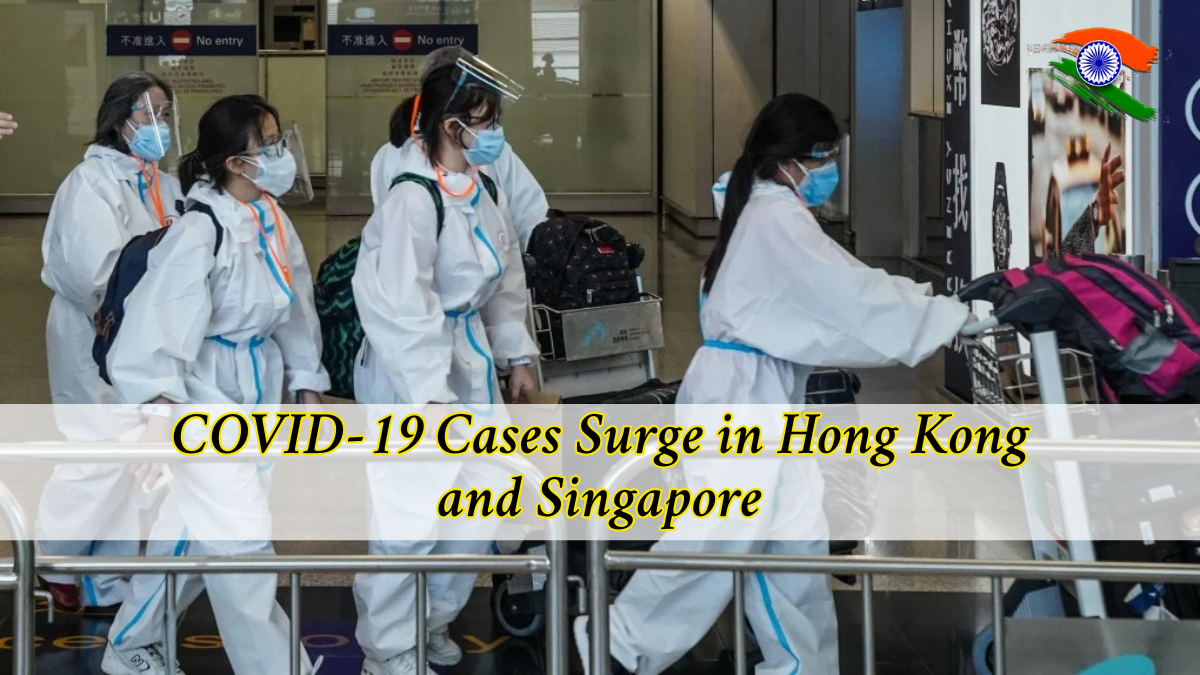As of May 2025, several Southeast Asian countries are experiencing a concerning surge in COVID-19 infections. Singapore and Hong Kong have seen a notable rise in daily case numbers, with health authorities closely monitoring variants and reinforcing public health advisories. Neighboring countries such as China and Thailand are also reporting increased COVID activity, pointing to a broader regional trend.

In this article, we explore the latest COVID-19 situation in Singapore and Hong Kong, examine the variants driving the surge, identify high-risk groups, describe the common symptoms of current infections, and share guidance for staying safe during this wave.
Table of Contents
Summary Table: COVID-19 Surge in Southeast Asia
Topic |
Details |
|---|---|
Countries Affected |
Singapore, Hong Kong, China, Thailand |
Variants of Concern |
LF.7 and NB.1.8 (related to JN.1 lineage) |
Case Surge |
Singapore: 28% increase; 14,200 cases reported as of May 3, 2025 |
Risk Factors |
Immunocompromised individuals, elderly, people with chronic conditions |
Symptoms |
Flu-like symptoms; mild in most cases |
Immunity Status |
Waning population immunity; booster shots recommended |
Health Ministry View |
No evidence of increased severity; cases treated similarly to seasonal flu |
Official Source |
Current COVID-19 Situation in Southeast Asia
Singapore: 28% Rise in Cases
Singapore is currently witnessing a significant resurgence in COVID-19 cases, with a 28% increase recorded in recent weeks. On May 3, 2025, the country reported 14,200 active cases. Although the majority of infections remain mild, the volume of cases has prompted renewed concern among health authorities and the public.
The country has dealt with several waves of COVID-19 since the onset of the pandemic, but this latest wave is attributed to newer subvariants of the virus.
Hong Kong and Regional Trends
In addition to Singapore, Hong Kong has also recorded a sharp rise in cases, following a similar trajectory. While Hong Kong’s exact numbers have not been made public in detail, health agencies are ramping up efforts to encourage vaccination, masking in crowded places, and personal hygiene to prevent further spread.
Other nations in the region, including China and Thailand, are also experiencing rising infections. China is reportedly approaching case numbers not seen since the peak of the previous summer, while Thailand’s increase appears linked to the traditional Songkran Festival, which occurred in April.
Variants Driving the New Surge
Singapore’s Ministry of Health has confirmed that the primary variants circulating in the country are LF.7 and NB.1.8. Both of these are closely related to the JN.1 strain, which had previously contributed to waves in other regions globally.
Together, LF.7 and NB.1.8 account for over two-thirds of all new infections in Singapore. While these variants appear more transmissible, they have not been linked to an increase in disease severity, according to the country’s health experts.
Health authorities emphasize that while new variants will continue to emerge, the key is monitoring their behavior—such as transmission rate, immune escape potential, and clinical impact.
Who Is at Risk?
Although the current wave has seen mostly mild cases, certain individuals remain more vulnerable to complications from COVID-19. These include:
- Elderly individuals
- People with chronic health conditions (e.g., diabetes, heart disease, asthma)
- Those with weakened immune systems
- Unvaccinated individuals
- People who have not received a booster dose
Health professionals in Singapore suggest that the waning immunity in the general population may be contributing to the resurgence. As such, booster shots are being recommended, especially for high-risk groups.
Symptoms of Current COVID-19 Variants
The symptoms reported in this wave resemble those of seasonal flu. The Ministry of Health in Singapore has noted that most cases involve mild symptoms, with very few requiring hospitalization. Common symptoms include:
- Fever
- Cough
- Sore throat
- Fatigue
- Runny nose
- Mild body aches
Doctors are managing these cases similarly to how they treat influenza, and recovery is typically quick and uncomplicated for most individuals.
Public Health Guidance: Staying Safe During the Surge
While there is no indication that the new variants are more severe, public health officials are urging people to remain vigilant and practice preventive measures:
- Get Vaccinated and Stay Updated with Boosters
Individuals who haven’t received their most recent booster dose are encouraged to do so, especially those in high-risk groups. - Practice Good Hygiene
Frequent handwashing, wearing masks in crowded places, and maintaining social distance can help limit virus spread. - Avoid Crowded and Poorly Ventilated Areas
Transmission risk increases in enclosed, crowded spaces. - Monitor Symptoms and Seek Medical Advice
Anyone experiencing flu-like symptoms should monitor their health, stay home, and consult a healthcare provider if symptoms worsen. - Follow Official Health Advisories
Stay informed through credible sources like the Singapore Ministry of Health for updates and local guidelines.
What Experts Are Saying
Experts remain cautiously optimistic, highlighting that while cases are increasing, hospitalizations and deaths have not surged proportionally. The presence of mild symptoms in most infected individuals is a sign that existing vaccines still offer significant protection against severe outcomes.
However, they caution against complacency. “Population-level immunity appears to be waning, especially in those who haven’t had a recent booster,” one infectious disease expert noted.
Frequently Asked Questions (FAQs)
1. Is the current COVID-19 wave more dangerous?
A. No, health officials in Singapore report that the current wave is not causing more severe illness than earlier variants. Most people are recovering quickly.
2. Should I get a booster vaccine now?
A. Yes, if you haven’t received a booster in the last 6–12 months, you should consider getting one, especially if you are in a high-risk group.
3. Are there travel restrictions due to the surge?
A. As of now, there are no new travel restrictions announced in Singapore or Hong Kong, but travelers are advised to monitor official advisories before planning trips.
4. How can I distinguish COVID-19 symptoms from the flu?
A. The symptoms are very similar. Testing is the only reliable way to confirm COVID-19. If you experience fever, fatigue, or cough, it’s best to get tested.
5. Where can I find official COVID-19 updates for Singapore?
A. Visit the Singapore Ministry of Health for daily updates, vaccination guidance, and public health announcements.
Conclusion
The recent uptick in COVID-19 cases across Southeast Asia—particularly in Singapore and Hong Kong—highlights the virus’s ongoing presence and adaptability. With mild but highly transmissible variants in circulation, maintaining personal health vigilance and following official guidance remain critical. The situation is being closely monitored by regional health authorities, and continued public cooperation is essential to manage the outbreak effectively.
Click Here To Know More





